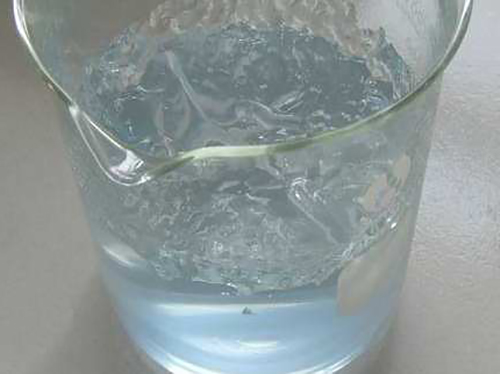polyacrylamide in water
Understanding Polyacrylamide in Water Applications, Benefits, and Considerations
Polyacrylamide (PAM) is a synthetic polymer widely recognized for its usefulness in various industrial and environmental applications. Dissolving polyacrylamide in water produces a viscous solution, leading to its extensive utilization in fields such as water treatment, agriculture, and the petroleum industry. This article aims to delve into the properties, applications, benefits, and considerations surrounding polyacrylamide in water.
Properties of Polyacrylamide
Polyacrylamide is formed through the polymerization of acrylamide monomers, and it is available in several forms, including linear, crosslinked, anionic, cationic, and nonionic. The varying properties of these forms contribute to their specific applications. When dissolved in water, polyacrylamide forms a gel-like substance that is able to retain large volumes of water due to its hydrophilic nature. This characteristic makes it particularly effective for enhancing soil moisture retention, improving water quality, and facilitating various chemical processes.
Applications in Water Treatment
Water treatment is perhaps one of the most significant applications of polyacrylamide. It acts as a flocculant, helping to agglomerate suspended particles, thus making it easier to remove impurities from water. In municipal wastewater treatment facilities, PAM plays a crucial role in the sedimentation process. By promoting the clumping of smaller particles into larger aggregates or flocs, it accelerates their removal through filtration or settling mechanisms.
Beyond municipal applications, PAM is also employed in industrial wastewater treatment. Industries such as mining, paper production, and textiles utilize polyacrylamide to clarify water and recover valuable materials. Its effectiveness in reducing chemical oxygen demand (COD) and total suspended solids (TSS) in effluents showcases its versatility in ensuring compliance with environmental regulations.
Agricultural Uses
In agriculture, polyacrylamide is extensively used for soil conditioning and moisture retention. By incorporating PAM into soil, farmers can improve soil structure, enhance water infiltration, and reduce erosion. This leads to better crop yield and quality, especially in arid regions where water scarcity is a significant concern. Additionally, PAM can be applied in irrigation systems to minimize the loss of water through evaporation and improve water distribution efficiency.
polyacrylamide in water

Polymers like PAM are also utilized in the formulation of controlled-release fertilizers, ensuring that nutrients are made available to crops over a sustained period. This not only maximizes nutrient uptake by plants but also minimizes nutrient runoff into water bodies, thereby reducing the risk of eutrophication.
Benefits of Polyacrylamide
One of the main advantages of using polyacrylamide in water-related applications is its effectiveness, even at low concentrations. This means that relatively small amounts can produce significant results, making it both cost-effective and environmentally friendly. Additionally, PAM is generally non-toxic and biodegradable, leading to minimal environmental impact when used appropriately.
Moreover, the water retention capabilities of PAM support sustainable agricultural practices by reducing the need for frequent irrigation. This is particularly beneficial in the context of climate change, where water scarcity is becoming an increasingly pressing issue.
Considerations and Potential Risks
Despite its advantages, there are several considerations and potential risks associated with the use of polyacrylamide. Its production involves acrylamide, a compound that is classified as a neurotoxin and potential carcinogen. Therefore, handling and usage must be managed carefully to avoid exposure. Proper precautions should be taken during the application of PAM in agriculture to ensure that residues do not pose risks to human health or the environment.
Additionally, while PAM is effective as a flocculant, its performance can vary based on the characteristics of the water being treated. Factors such as pH, temperature, and the presence of other chemicals can influence the efficiency of PAM, necessitating thorough testing before its application in specific scenarios.
Conclusion
Polyacrylamide is a versatile polymer with a range of beneficial applications, particularly when dissolved in water. From enhancing water treatment processes to improving agricultural productivity, its uses are vast and varied. However, it is essential to navigate the potential risks associated with its use carefully. With appropriate management and innovative practices, polyacrylamide can play a significant role in addressing some of the critical challenges faced in water conservation and environmental sustainability today. As we continue to explore its capabilities, ongoing research will undoubtedly reveal new applications and improve the safety and efficacy of this valuable polymer.
-
lk-319-special-scale-and-corrosion-inhibitor-for-steel-plants-advanced-solutions-for-industrial-water-systemsNewsAug.22,2025
-
flocculant-water-treatment-essential-chemical-solutions-for-purification-processesNewsAug.22,2025
-
isothiazolinones-versatile-microbial-control-agents-for-industrial-and-consumer-applicationsNewsAug.22,2025
-
scale-inhibitor-key-solutions-for-water-system-scale-preventionNewsAug.22,2025
-
organophosphonates-versatile-scale-inhibitors-for-industrial-water-systemsNewsAug.22,2025
-
scale-and-corrosion-inhibitor-essential-chemical-solutions-for-water-system-maintenanceNewsAug.22,2025





